Emerald Lakes Gold Coast: Exclusive enclave’s controversial beginning
Residents of one of the Gold Coast’s most exclusive enclaves slammed an expansion of the project, which they likened to a “suburban slum”.
Property
Don't miss out on the headlines from Property. Followed categories will be added to My News.
THE exclusive enclave of Emerald Lakes rose from the semirural flood plains of Carrara to become one of the Gold Coast’s hottest addresses in less than 15 years.
The project was the brainchild of Japanese businessman Toshiaki Ogasawara, founder of Gold Coast developer Nifsan, who came to the city in 1988 to play golf on a business trip and fell in love.
It was a love that stayed with Mr Ogasawara until his death in 2012.
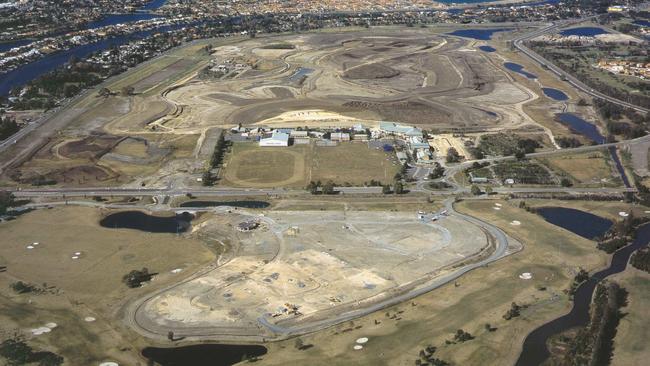
Proposed in the mid-1990s, construction of Emerald Lakes finally began in 2001 and lasted more than a decade.
While much of the work was completed within a handful of years, the centrepiece of the $1bn precinct – a giant $200m French Quarter – started to take shape in the mid-2000s and continued well into the late 2010s.
The project was unveiled in 2006 and was greeted with enormous excitement.
Initially priced at just $60m, it was pitched to the Gold Coast City Council as an “authentic European village”.
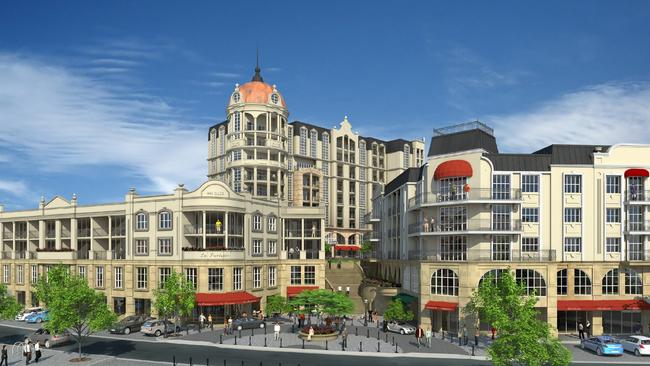
“The village will feature narrow cobblestone streets, alleys, public piazzas and monuments inspired by the Leaning Tower of Pisa, Trevi Fountain and Spanish Steps,” the initial pitch read.
“In its determination to achieve maximum authenticity, Nifsan sent its construction management team to Italy and France to inspect building methods.”
It was launched to the market in 2007, the same year construction began.
Nifsan unveiled a surprise addition in mid-2008 – a gigantic replica of Michelangelo’s David.
The company had bought it from developer Juniper Group, which had stood it in the heart of Surfers Paradise’s Raptis Plaza before its 2007 demolition to make way for the Soul supertower.
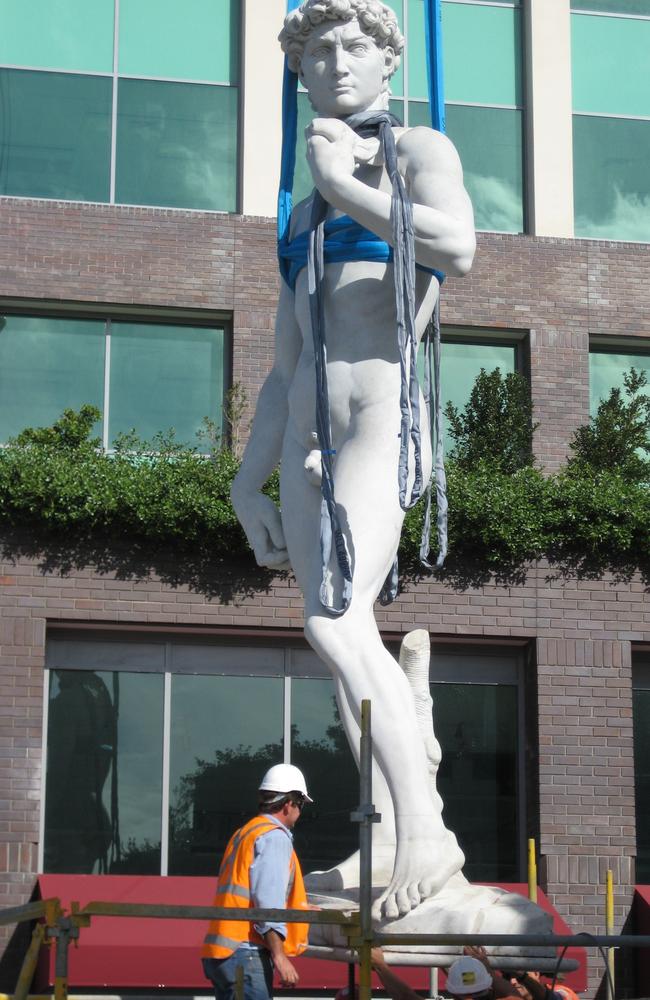
Nifsan general manager David White said once he read about the 7m-tall statue – coincidently made out of Carrara marble from the same quarry the original David was created from – he contacted Juniper.
“We heard they were going to sell it overseas, but we thought this would be perfect in our development,’’ he told the Bulletin at the time.
“Emerald Lakes will follow a European theme and we have plans for a proposed central piazza, the town centre, before council. This is where we envisage David would go.
“The beauty about having it there is that it will be visible to drivers from Nerang Broadbeach Road.
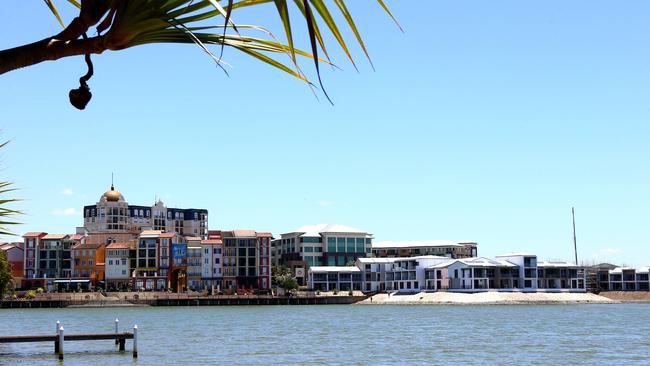
“He’s staying on the Gold Coast in a very prominent spot. While we can’t disclose how much we paid for it, it was a substantial investment to keep it on the Gold Coast.”
Mr Ogasawara said the statue demonstrated “the ongoing commitment of Nifsan to the development of Emerald Lakes”.
By 2009, construction had reached the halfway mark and had defied post-global financial crisis expectations by selling out rapidly.
The European precinct was completed in 2011, when the first residents moved in.
Harbour Village, the final stage of the waterfront precinct, was approved by the Gold Coast City Council in 2014 and construction began soon after.

But some Emerald Lakes residents were unimpressed and slammed the council for allowing a “suburban slum”.
Frank and Cathy Boggs said the project damaged the area’s amenity and called on Nifsan to recolour the white buildings.
“Our concern with this development is we do not believe it complies with regulations at all,” Mr Boggs told the Bulletin in 2016. “It has no colour and is not in line with the vision for this area.
“Nifsan envisaged Emerald Lakes as being a unique place but this changes things. When we came here the park spaces were open and you could walk your dog and see the lakes but now we are worried this will create a suburban slum.”
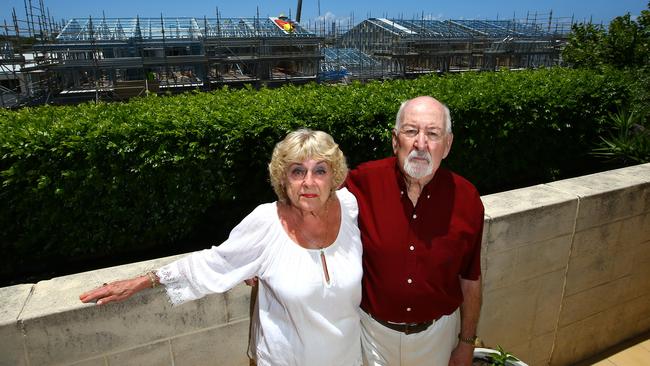
Area councillor Bob La Castra dismissed the residents’ concerns and defended the decision to approve the project.
He said it was unrealistic to judge the development until it was completed.
“The European quarter of Emerald Lakes was never intended to be the sole piece of the project and the rest of the development there was never meant to look like it. The colourful buildings were always supposed to be unique,” he said.
“These new buildings will not compete with it and they are unfinished, so to suggest they will have no colour is wrong – they haven’t been painted yet.
“While much of it will be white, there will certainly be some subtle colours, but nothing like the European village.”
A petition demanding the council step in was put to city leaders and rejected.
The development, as envisaged, was completed without further controversy.
Nifsan’s Australian holdings were unwound and sold off in the late 2010s, with Pointcorp buying Emerald Lakes.
‘Disaster’: Exclusive enclave’s controversial expansion
PLANS to redevelop one of the Gold Coast’s most famous landmarks into a golf course and housing estate on a flood plain was controversial from the beginning.
Emerald Lakes was one of the city’s biggest projects of the 1990s and 2000s and dramatically reshaped Carrara.
The golf course this week made headlines for all the wrong reasons, being the location of a tragedy.
Young sportsman Nicholas Hunter drowned in one of the ponds after a night celebrating with mates.

It was a sad turn of events for the precinct, which traces its origins back to the 1990s.
Developer Nifsan filed plans with the Gold Coast City Council in December 1995 to rezone more than 125ha of flood plain for a $150m residential project with room for more than 750 homes and 46ha of waterways.
It had already taken over the Carrara Golf Club in 1990 and renamed it Emerald Lakes.
The project was the brainchild of Japanese businessman Toshiaki Ogasawara, Nifsan’s founder who came to the Gold Coast in 1988 to play golf on a business trip and fell in love.

The proposed site of the development was the former home of the Surfers Paradise International Raceway.
Built by Sea World founder Keith Williams in 1964, it first hosted drag races on April 10, 1966, while the first race meet at the 3.2km track was on May 22, 1966.
Famed driver Sir Jack Brabham was a frequent competitor in its early years. Twelve-hour endurance races were a feature before six-hour events became commonplace by the end of the 1960s.
The track closed in 1987 and eventually became home to a Tiger Moth joy ride and helicopter charter business, as well as a go-kart track.
By 1995, the bulk of the site had been empty for years.
Nifan’s proposed immediately drew criticism from the Australian Conservation Foundation’s Gold Coast president Peter Farrell who warned it had “the potential to be a disaster”.
“In 1974, a 72-hour deluge filled the Gold Coast flood plains cutting roads and isolating entire communities – let’s not forget that regular floods are a normal pattern on the Gold Coast landscape,’’ he said.
“This development is smack-bang in the middle of the flood plain and development may also force flood waters to back up and flood other areas adjoining the site which may not flood in normal circumstances.’’
Mr Farrell said he feared the canals and waterways would become “killing fields’’ for thousands of fish if acid sulfate soils were disturbed.
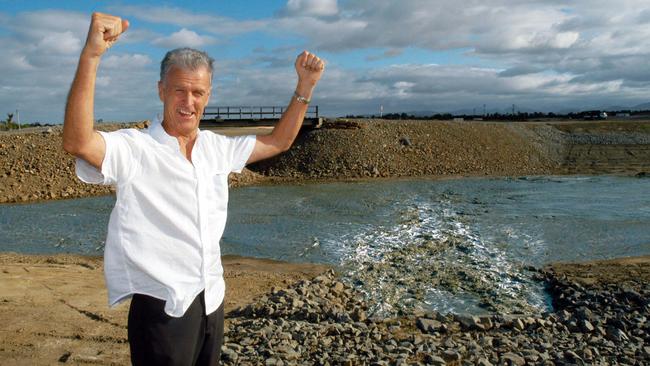
Nifsan director Ian McLean said Mr Farrell’s claims were simple scaremongering.
“He’s doing a good job of trying to create a situation of frightening people and people should be aware that the Gold Coast City Council has to approve this plan in accordance with good engineering hydrology,’’ he said.
The council ultimately chose not to act on the project in the required approval period, in essence giving it a “deemed refusal”.
Nifsan took the council to the Planning and Environment Court in 1997. A tense series of hearings followed.

Mr Farrell, while giving evidence, claimed corruption was “rife” in the council.
Both council CEO Dr Douglas Daines and the Criminal Justice Commission (CJC) launched immediate investigations into the claims, which were found by the CJC to be “vague, imprecise and unsubstantiated”.
Nifsan redeveloped its plans in consultation with the Court and Council and resubmitted. Approval was granted in 2001.
Under the new plan, more than 85 per cent of the site remained open and undeveloped.
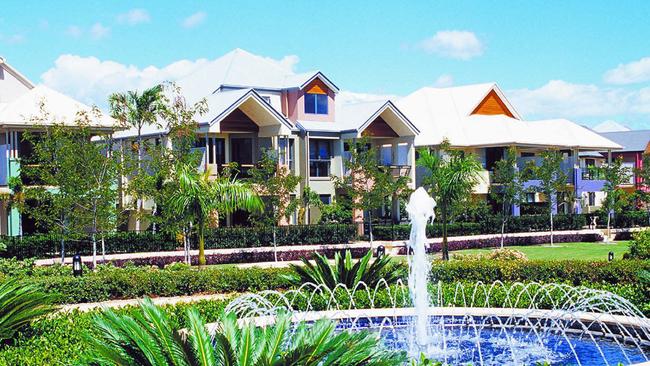
A controversial plan to link the major lake on the Emerald Lakes site to the Nerang River via a lock and weir system was shelved.
The remaining businesses on the former international raceway site also closed in 2001 and bulldozers moved in later that year to clear the site.
More than $200,000 was spent relocating five fig trees which had been planted in the 1930s by Carrara pioneer Billy Birmingham Snr. He had brought a seedling from Casino in 1930 when he established his family’s dairy farm on the future Emerald Lakes site.

The Emerald Lakes precinct, which would ultimately cost more than $1bn, was completed by the early 2010s.
Mr Ogasawara did not get to see his dream entirely come to fruition.
He died in late 2012 at age 85 following an 18-month illness.
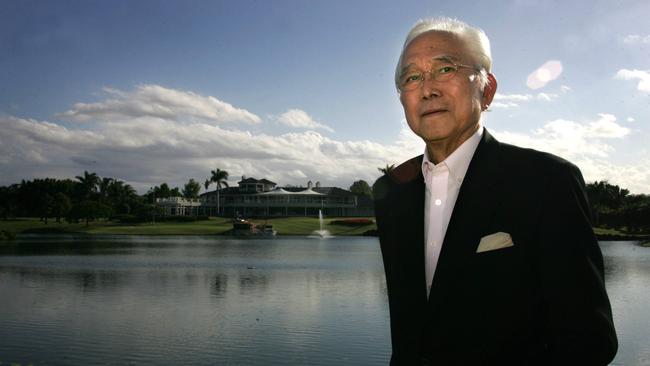
Then-Nifsan chief operating officer Louise Bird told the Bulletin in 2012 that Mr Ogasawara had always had a passion for the city.
“The fact that he endured as an investor in the city while many of his compatriots fell by the wayside bears testimony to that.”
More Coverage
Originally published as Emerald Lakes Gold Coast: Exclusive enclave’s controversial beginning





